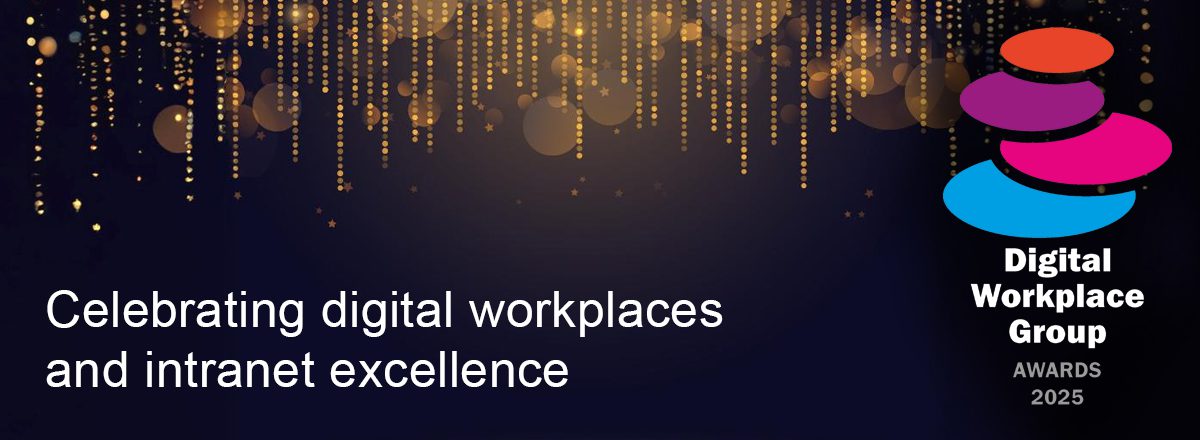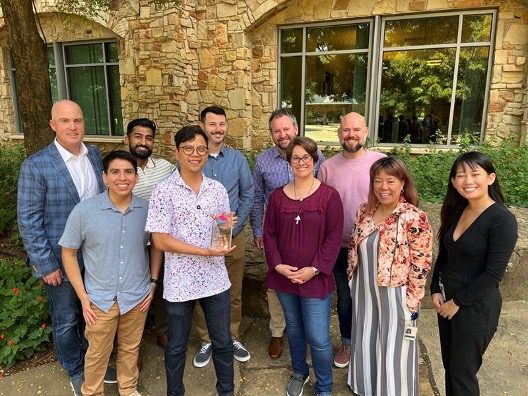Six pieces of advice for the Digital Workplace Group Awards

Entries are now open for the DWG Awards 2025. Now in their eighth year, the Awards have already attracted an impressive and diverse set of entries from around the world and across different sectors.

The Awards are produced by DWG and celebrate organizations and practitioners who have excelled in creating well-executed, high-performing digital workplace environments and modern intranets. We asked entrants to the Awards for the advice they would give to peers in other organizations as they seek to achieve digital workplace success; now we’re pleased to share their tips – here are six pieces of advice we gleaned from previous entrants:
1. Focus on people not products
We heard this piece of advice again and again from entrants (and we strongly agree with it): digital workplace teams need to consider people and the digital journeys they are taking in their daily working lives rather than focusing on products and features. This means understanding how employees work (aka doing the research!) and implementing what is best for them, rather than prioritizing the product or tool. What it doesn’t mean is starting out with a tool and then looking for problems to solve with it. Some used the terms ‘servant’ or ‘service’ to describe the orientation of how they approach employees as clients, with listening key to coming up with the right solutions. And, as one entrant pointed out, this is not just important at the start or the end but throughout the entire digital workplace lifecycle.
2. Get the right people involved, at all levels
This piece of advice is all about ensuring that the digital workplace strategy is woven into the wider fabric of the organization. It means relentlessly aligning that strategy with the overall goals of the organization as well as gaining cross-functional involvement and buy-in across the organization. Getting the right people involved is critical to success, all the way from senior leadership, to the team and peers that should be involved in delivery, the internal and external experts who can advise on specific aspects of the programme, and the community managers and advocates who will help employees to adopt the tools. A critical aspect of this is to ensure there is robust operational and strategic governance in place, providing the framework and structure to enable these various groups of people to engage in the programme in an optimal way.
3. Welcome failure as a friend
This can be a hard piece of advice to take on board for any team, but failure can indeed be a friend and good teacher. We can’t put it better than one of the entrants: “Failure can be a great and insightful thing! [Our] team fully supports the idea that it is better to test something […] and have it fail miserably, than to roll it out to sites worldwide, invest resources and then have it fail at a larger scale. Due to this mentality, the team is able to test a lot in the space and learn just as much about when things fail, as when they succeed. When things do fail, it is important to understand why they did and what could have improved the employee experience. From there, the team can determine how to iterate or try something completely new.”
4. Test, then test again (and again)
And that process of testing doesn’t stop. Our judges were meticulous in looking for evidence of user testing among the entries, rewarding those who are truly engaging in this with great scores in the ‘user engagement’ category. Even more importantly, employees clearly reward the digital experiences that have undergone rigorous user testing with adoption and buy-in. This kind of testing is essential to check the direction of travel for your digital workplace programme and course-correct if needed. As one entrant put it: “Data from even a five-minute usability test may squash your ‘design ego’ but remind you that the purpose of your work is to help your employees be at their best.” We think that squashing ‘design ego’ with usability testing pretty much hits the nail on the head.
5. A content strategy is not a nice-to-have
Several entrants emphasized the criticality of a content strategy to drive useful, engaging and fresh content across the digital workplace. This includes aspects such as managing content lifecycle, overseeing the publishing community, meta data and taxonomy, driving personalization, balancing corporate and user-generated content – and more.
6. Plan for adoption – and measure it!
Last, but certainly not least (and many entrants had things to say on this point!), is the need to take organizational readiness and adoption seriously. Their advice includes:
- Think through your adoption and training approach well ahead of launch and communicate relentlessly throughout the process.
- Training isn’t just a ‘one shot’ effort; it needs sustained effort and investment to help employees evolve their skills and confidence with the digital workplace. A variety of interventions (both formal and informal) are important to bring everyone along on the journey.
- Nurture champions or ambassadors in the business as they can be a key ingredient in your adoption efforts.
- Tackle the tricky area of measurement head on, defining key metrics for success from the outset and ensuring that they are linked back to organizational outcomes.
And, of course, don’t forget the power of leading by example: “The best advice we can offer is to act as a role model for employees. The project team and editor community should be at the forefront of the project as ambassadors encouraging employees and creating a path for an easy transition into the digital workplace and away from old habits. It is not just about being an enthusiast, but very much a matter of showing by doing.”
Submitting an entry for 2025 will give you and your organization the opportunity to share your digital workplace achievements with peers and to gain global, industry recognition!
The deadline to submit your entry for the DWG Awards 2025 is June 27, 2025 at midnight (BST).
Categorised in: → Digital Workplace Group Awards
